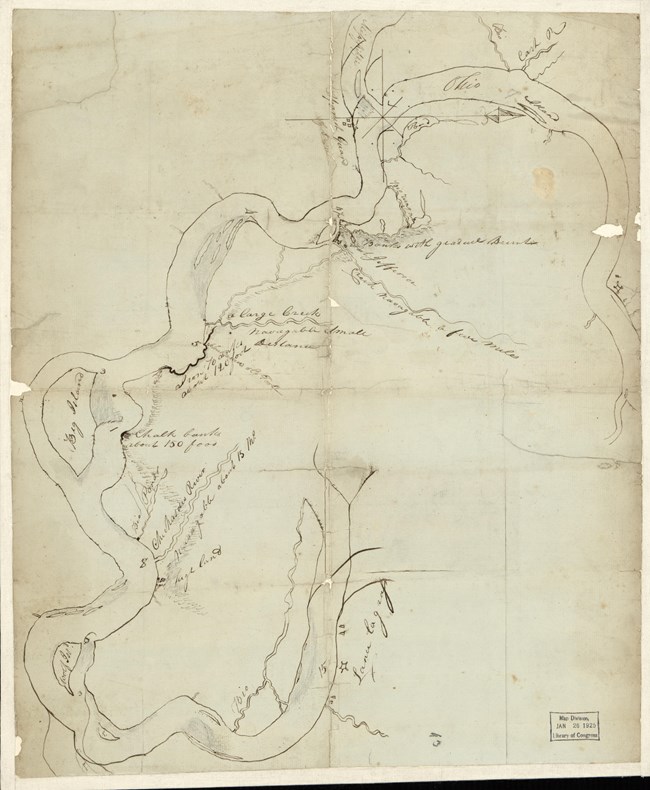Last updated: March 10, 2025
Article
Ohio River Valley: A Place for Refugees

Library of Congress Geography and Map Division
Indigenous people who were displaced by British or American settlement to the east, including folks from Shawnee, Delaware, and Seneca communities, resettled here in the 1700s. As pressures from American settlement grew, so did the number of refugees in the Ohio River Valley. People flowed in, from Mahican, Wyandot, Miami, Huron, Pinkashaw, Ottawa, and Cherokee towns and villages that had seen violence from American settlers. They accepted refugees from far-flung communities and created new alliances across languages and backgrounds.
In the 1790s, Delaware and Shawnee leaders organized an intertribal confederacy against the American government, who they felt was trying to kill them and take their lands: Secretary of War Henry Knox had issued an order to “extirpate” Shawnee and other Indigenous people in the Ohio River Valley.
The genocidal wars waged by the American government in this region culminated in the 1795 Battle of Fallen Timbers, near Lake Erie. At that battle, Americans, including a young William Clark, defeated a pan-Indigenous confederacy. Delaware and Shawnee leaders were then forced to sign a treaty that ceded parts of present-day Ohio, Indiana, and Illinois to the United States. They headed west and north, again refugees.
At their winter camp in Illinois, Clark recognized several Delaware individuals who he had met during that treatymaking, who had moved west as a result of it. He also saw many Shawnee and Delaware residents near Fort Kaskaskia.
The Ohio Valley was a place of re-settlement. In 1803, Clark and Lewis, while they set out on the next task in the American colonial project, observed how it had was already happening here.
About this article: This article is part of a series called “Pivotal Places: Stories from the Lewis and Clark National Historic Trail.”
